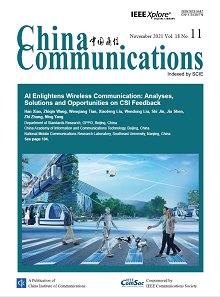BUSINESS PROCESS & MANAGEMENT
Amit Kumar Gautam, Rakesh Kumar
2021, 18(11): 210-228.
Wireless Sensor Network (WSN) has witnessed an unpredictable growth for the last few decades. It has many applications in various critical sectors such as real-time monitoring of nuclear power plant, disaster management, environment, military area etc. However, due to the distributed and remote deployment of sensor nodes in such networks, they are highly vulnerable to different security threats. The sensor network always needs a proficient key management scheme to secure data because of resource-constrained nodes. Existing polynomial based key management schemes are simple, but the computational complexity is a big issue. Lucas polynomials, Fibonacci polynomials, Chebychev polynomials are used in Engineering, Physics, Combinatory and Numerical analysis etc. In this paper, we propose a key management scheme using $(p, q)$- Lucas polynomial to improve the security of WSN. In $(p, q)$- Lucas polynomial, $p$ represents a random base number while $q$ represents a substitute value of $x$ in the polynomial. The value of $p$ is unique, and $q$ is different according to communication between nodes. Analysis of the proposed method on several parameters such as computational overhead, efficiency and storage cost have been performed and compared with existing related schemes. The analysis demonstrates that the proposed $(p, q)$- Lucas polynomial based key management scheme outperforms over other polynomials in terms of the number of keys used and efficiency.
